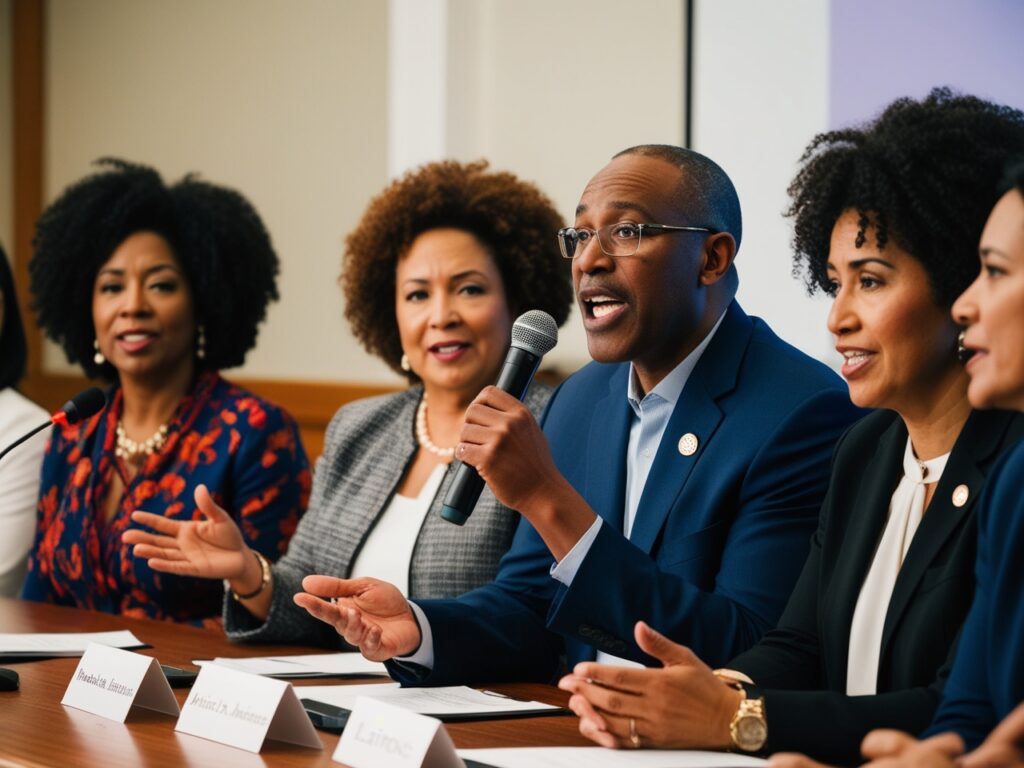You have more power than you might think. When it comes to addressing the challenges facing your community, it’s easy to feel like your voice is just one among many, too small to make a real difference. But here’s the truth: innovative solutions start with individuals like you. When your ideas are amplified by others, they can reshape entire communities.
The path to community empowerment begins with personal agency—the belief that you can drive change. You don’t need to be an elected official, a CEO, or even a community leader to have a meaningful impact. What you need is a commitment to finding solutions and the willingness to speak up. Let’s explore practical ways you can make your voice heard and contribute innovative solutions to the challenges your community faces.
Find the Gaps and Opportunities
Every community has its gaps—areas where needs aren’t being met and opportunities for improvement exist. The first step in contributing innovative solutions is to identify these gaps. Start by asking yourself: What are the recurring issues in my community? Is it access to quality education, insufficient public transportation, or an underdeveloped local economy?
You have a unique perspective because you’re living in the midst of these challenges. Look closer—what’s missing? And where can innovation come into play? Perhaps local businesses could benefit from better online marketing to boost economic growth. Maybe you see an opportunity to reduce food waste by coordinating a community garden initiative. Focus on where change is needed and where creative thinking can bring solutions.
Start Small, Think Big
One common misconception about community empowerment is that you need a sweeping, revolutionary idea to make a difference. The truth is, small, incremental changes often lead to the most lasting impact.
For example, picture a neighborhood where a group of residents sees an abandoned lot. Instead of waiting for the city to step in, they gather friends, clean it up, and turn it into a community park. What starts as a small project can inspire others to do the same, leading to a larger movement that transforms neighborhoods.
You don’t have to change everything at once. Start small but think big. Organize a local cleanup day or start a tutoring group to support students. Once people see what’s possible, they’ll get involved, and your small idea can grow into something much larger.

Leverage Technology to Amplify Your Voice
In today’s digital world, you have more tools than ever to make your voice heard. Social media platforms, community forums, and online advocacy tools are ready to help you spread the word about the changes you want to see.
Use social media to rally support for your ideas. Create a Facebook group or start a hashtag campaign around the issue you’re passionate about. Share stories of how this problem affects your community and what solutions you propose. Technology not only gives you a platform to share your ideas but also connects you with others who might be interested in collaborating or supporting your cause.
Crowdfunding platforms like GoFundMe or Kickstarter can also be powerful tools if your project requires funding. These platforms help raise money while building a sense of shared ownership and accountability within the community.
Build Alliances with Local Organizations
Another way to make your voice heard is by aligning with existing local organizations. Whether it’s a nonprofit, community development group, or local business, these organizations already have networks, resources, and credibility. By partnering with them, you can leverage those assets to bring your ideas to life.
You don’t have to start from scratch—find ways to plug into what’s already happening. If you’re passionate about improving local schools, reach out to organizations that focus on education. Offer your ideas, volunteer your time, and show that you’re invested in finding solutions. When people see your commitment, they’re more likely to support your initiatives.
Use Data to Strengthen Your Case
If you want to create change, you need a compelling case for why it’s necessary—and data can help you do that. Use statistics, studies, and reports to back up your claims and demonstrate the impact of the problem you’re addressing.
For example, if you’re advocating for more green spaces in your neighborhood, find data on how parks and public spaces improve community health and well-being. Presenting this information strengthens your argument, especially when speaking to local government officials, community leaders, or potential supporters.
Data is also useful for measuring the success of your project. Show people the results of your work—whether it’s the number of participants at an event you organized or the amount of waste reduced through a recycling initiative. Concrete numbers will help gain support for future projects and keep momentum going.

Inspire Others to Take Action
One of the most powerful ways to contribute to community empowerment is to inspire others to take action. Your voice becomes exponentially more powerful when others join in. Share your successes, challenges, and lessons learned with your neighbors, friends, and social networks. Show people that they, too, have the power to make a difference.
Leadership doesn’t always mean standing at the front of a room or running for office. Sometimes, it’s about taking the first step and inviting others to follow. When you act, you show your community that change is possible, and you inspire others to do the same.
The Power to Create Change Is Yours
At the heart of every thriving community are individuals who believed they could make a difference—and then did. You have the ability to shape the future of your community by offering innovative solutions, advocating for change, and engaging others in the process.
So, what’s the next step? Look around you. Identify the challenges, think creatively, and start taking action. You don’t have to wait for someone else to make things better. The power to create change is in your hands—and it starts with your voice.


